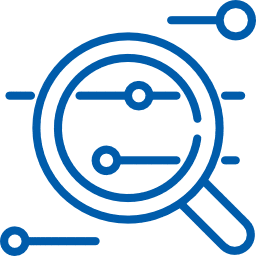Leveraging Artificial Intelligence (AI) for Your Company's SRP Generation
- Anne Marie Sollazzo
- Aug 4
- 3 min read

The first thing I always review with a company is their Safety Risk Profile (SRP)…or their Hazard Log. You’d be surprised at how many (perceived) blank stares, sounds of crickets, unanswered emails, and side-eye looks I think I get when I ask this question. The silence is deafening.
It’s a big thing too to ask straight up: Does your company have a list of known hazards that you review regularly as part of your SMS processes? Are they already established? Or are they being populated over time? Are they more than the obvious “Water on walk-way/slip hazard” or “Cord in pathway/trip hazard” that everyone tends to count as a major hazard to the company when asked by an auditor to create a Safety Risk Profile as corrective action for a finding?
Years ago, I’d done significant research of my own on Part 135 hazards in trying to determine what exactly an auditor would want to see in that SRP. And what those hazards would be in terms of Probability vs. Severity for that particular company. You’d be surprised at what a deep dive into the internet brings about - definitely more questions than answers on this one.
Ideally, creating or reviewing the SRP is an exercise for leadership. To gather together and brainstorm about day to day hazards, write them down, and think about how that one thing can lead to something not so great and possibly cross different departments. For departments to “own” their hazards and mitigations, rather than the Safety Manager creating a list that no one ever looks at until audit time comes round again.
The biggest hurdles I’ve seen surrounding the SRP is this:
The company’s SMS is young, the Safety Manager was “voluntold” to be in this position…and it’s part time on top of his/her other duties in the company…they don’t have the bandwidth to tackle the project
The company’s SMS is established, but the Safety Manager inherited a weak hazard log and is trying to straighten it out, but doesn’t know where to start
Getting people together is a chore, especially when everyone is wearing multiple hats and carving out a another one or two hour meeting is unthinkable (this is the most common hurdle I have come across)
This is where AI comes in to help out our already tired Safety Manager brains.
Into one of the many AI generators available, I entered: “Birds near runway. Create hazard, risk, consequence and mitigation strategy for Part 135 Helicopter operation.” The results were absolutely spot on. I would paste them here, but I’d rather you do a little digging of your own. This particular generator even asked if I wanted a formal Safety Risk Assessment written up. Sure! Why not?!?
In another test, AI successfully generated a comprehensive and relevant Hazard Log for a specific operation and location. This output provided an immediate starting point for leadership discussions, eliminating the burden on a single individual who may not have possessed the necessary expertise.
Is AI perfect and the answer to all of our SMS quandaries? At this moment I would say “no” since it has been proven time and again that it is as only good as the source materials and the quality of the question it is being asked. No doubt, the field is growing fast, is intriguing and will be a big part of our world. However, the human is still the recipient of the end product and the final decision maker when it comes down to brass tax. Accountability of everything lies with us humans.
For fun, the next paragraph was created via AI…
In conclusion, while AI offers a powerful solution for streamlining the creation of Safety Risk Profiles and Hazard Logs, it is essential to recognize its role as a supportive tool, not a complete replacement for human expertise. AI can efficiently generate comprehensive and relevant safety documentation, providing a strong foundation for leadership discussions and fulfilling audit requirements. However, the ultimate responsibility for reviewing, refining, and implementing these safety measures—and ensuring accountability—remains firmly with human decision-makers. By intelligently integrating AI, organizations can empower their safety managers, foster proactive risk management, and ultimately enhance the effectiveness of their overall safety management systems.
Thanks for summing this up, AI.





Comments